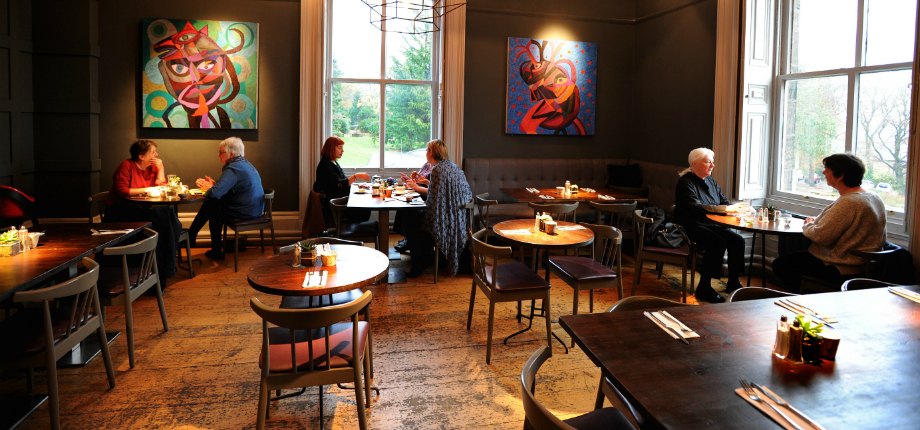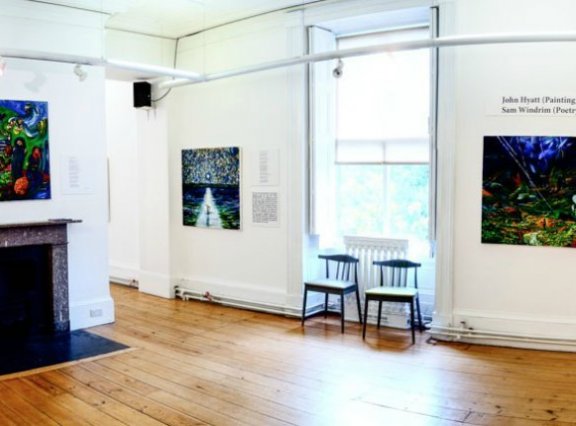Asset transfer is a relatively new approach to managing museums. It is complex, and it will be some time before the implications can be assessed. We spoke to Bethany Rex, Research Fellow at The University of the Arts London and author of the guide on behalf of AIM, to find out more about her research into museum asset transfer and, in a sea of toolkits and guidance, why this guide was needed.
Hi Bethany – Why was the creation of the new AIM Success Guide ‘Successfully Taking Over Your Local Museum’ so important?
I didn’t expect to be writing a guide like this when I started my PhD project. There were several clear and comprehensive guidance documents online already. I thought groups would use to help them understand the process and the complexities involved. Pillars of the Community, written by Locality for English Heritage is one of the best, along with several others produced by local authorities referred to in the guide.
When people would ask me to clarify aspects of the transfer process I’d point them to these documents. After a while, however, it became clear that they weren’t being read or used as people would ask me questions that were answered in these documents. This wasn’t because they weren’t useful documents, but because people didn’t perceive them as relevant to them.
None of the available documents were about museums specifically. The simple matter of not mentioning ‘museum’ in the title seemed to be enough for people to dismiss the documents as irrelevant. Or they would type in ‘museum asset transfer’ online and documents about heritage sites would come up. Either way, what was already out there wasn’t being read. When you already feel unfamiliar with something, it’s easy to feel overwhelmed by what is out there, so I wanted to address that feeling with a document that was explicitly for these groups.
A lot of the power in the transfer process rests with the local authority: they decide which groups to work with, how much support they can give and what the deadlines are. Local authorities are often dealing with several transfers at the same time so staff are under huge pressure – the cuts they are dealing with from central government are so significant that many are being forced to withdraw funding from multiple buildings, people are being made redundant, yet they are trying their best to ensure spaces stay open so people can use them.
With all of this in the background, it is understandable why council officers sometimes try to implement a one-size-fits-all approach to asset transfer, even when they think they are offering a range of options. The detail of contracts is a good example of this. A newly formed group taking over a museum should not have the same contractual obligations as an established organisation taking over several former council buildings, for example, yet this is sometimes proposed by staff too busy to take a gentler approach.
The guide tries to tackle this by making it clear that the transition process is a negotiation, and groups have a right to engage in a dialogue with their respective local authorities to ensure the arrangements for transfer are appropriate and sustainable.
It was important to me that the guide was produced in dialogue with people with lived experience of asset transfer. Although it was written by me, decisions about the content were made by a working group of people, all of whom are directly involved with managing museums following a transfer.
What is your own personal experience of working with groups that have gone through the transition process?
I was doing a PhD on community asset transfer, which started life as a project about the implications of the government’s austerity programme for museums. As part of that I interviewed and observed people involved in asset transfer, both local government employees and volunteers, to understand more about their experience of that process, both the practicalities involved and the ethical questions it raised for them.
The transfer process is long, complex and challenging, and it was truly astounding the amount of responsibly being placed on people often working in a voluntary basis alongside other jobs, family or caring responsibilities. It’s worth remembering that asset transfer tends to involve the withdrawal of public funds and a distancing between the museum and the democratic mechanisms of the local authority. I don’t think the implications of this are well understood.
What was most memorable for me were the critical commentaries people offered on the risks involved in volunteering to operate and govern these museums when the council could no longer afford to do it themselves.
There are good reasons to be cautious about the growing trend for councils to transfer museums to newly formed groups under what are often unsustainable funding arrangements. It disproportionately favours people with the financial and cultural resources to undertake this form of voluntary activity, potentially leading to more museums that cater to their tastes.
It lessens the blow of budget cuts: imagine if all those services from libraries to museums, public parks, swimming pools to community centres now kept open by volunteers were now closed, would there be a more powerful opposition to austerity by now? It creates the impression that it doesn’t matter whether museums are managed by people with specialist knowledge and training. On occasion, transfers are celebrated and offered as examples of best practice in a way that downplays the labour involved in making transfers happen: these aren’t just examples of buildings being kept open but involve the maintenance of relationships and continuation of support to people who use the space.
There’s also the small matter of collections management, interpretation and conservation. It would be a dangerous situation should local authorities rely on asset transfer as a way of maintaining public spaces and the services they provide, replacing paid staff with unpaid labour. It has also been argued that asset transfer closes down for politics and social change, but I think more work needs to be done before we can answer that charge.
All these questions played on my mind as I put the guide together but however familiar I was with the critique of asset transfer and the broader political agenda it forms part of, my loyalties were with those people who gave something to my project and the guide is a way I can try and repay some of that generosity.
Why is it so crucial to get the support of local communities for organisations before asset transfer takes place?
Asset transfer often arises because public funding has been withdrawn. In this context, organisations undertaking transfer need all the support they can get, whether that is from people who use the museum or value its existence or from public and private funders. Unfortunately, so much of the initial challenges involved in asset transfer have to do with funding. The support of the local community may come in the form of donations, or it may involve participating in discussions on potential future uses for the museum and its resources.
As many of the funders require applicants to demonstrate some form of engagement with current or potential users, the participation of people with an interest in the future of the museum in these activities is important. On another level, people working hard to make a transfer happen need the moral support of their fellow residents – if you value what they are doing then it can really help to let them know.
Why do you think all asset transfer groups should take up the offer of one year’s free membership of AIM?
Local authorities are going through a period of unprecedented budget cuts. This means that staff working in local authority museums may want to offer support, help and advice to asset transfer groups but it may not be possible.
When this happens, it can feel as if there is no support available but this is far from the case. It’s probably a bit of a generalization but the museum sector is a highly collaborative domain, full of people who are happy to share their knowledge and experience of working with collections in interesting, challenging and inspiring ways, as well as running museums that bring in enough money to keep it going. Being a member of AIM is an easy way to gain access to the experience of its members: talking to these people is a nice way to remind yourself that you are not alone in finding operating a museum difficult at points.
I’ve often heard people from asset transfer groups say ‘I’m not a museum person’ as a way to summarise that they are not at ease with asking whether the museum they are now responsible for (and by museum I mean the collection, building and the staff) can be put to better use as a tool that can have a positive impact on people. Being a ‘museum person’ is often seen as a status available to those with professional qualifications and experience only. I’d hope that being part of AIM would alleviate some of these limiting assumptions and concerns by illustrating that not everyone working in museums is the same (although it is undeniable that the sector is not as diverse as it ought to be). It’s a bit of a cliché but I’d also hope it would build people’s confidence, to enable them to see that their ideas for putting the museum to different uses are valid and worth exploring. It’s also worth mentioning that asset transfer groups bring a range of expertise and experience to the table too, which existing AIM members could learn from.
On a practical level, being an AIM member allows you to apply for several grant schemes covering areas from conservation, staff training, consultancy. In the current funding landscape, this is a serious benefit.
*If your museum and group is going through asset transfer would like to take up the offer of free AIM membership, please email: sassy@aim-museums.co.uk
Taking over a museum using community asset transfer is a huge undertaking – what are your 4 top tips to help organisations make the transition?
This is not an easy question as so much commentary on asset transfer implies that all that its challenges can be overcome if only the individuals involved are passionate and hardworking enough. In some cases, the financial and practical challenge may be simply too great for any group of individuals to overcome. In these situations, walking away should not be considered a failure: keeping museums open is a good thing, but not at all costs. With this disclaimer in mind, I’d highlight the following as vital in making the process as smooth as possible:
- Maintain a productive working relationship with the local authority, but do not assume you don’t have the right to challenge suggestions that seem unreasonable or unviable to you.
- Have a clear vision about why you’re doing this in the first place, communicate this to others so people outside your network don’t feel like it’s a closed shop and ensure your group are allied around this goal to help you through those difficult moments.
- Protect yourself by being informed, make sure you understand the costs involved in running the building, the options in terms of the lease, requirements of funders and potential to generate income.
- Veer from the script, you don’t have to undertake costly renovations to the building in order for the museum to become valuable and relevant to the people who might want to use it, think about smaller-scale activities that can help you achieve your goals that don’t require as much resource.
Download the AIM Success Guide: Successfully Taking Over Your Local Museum here



